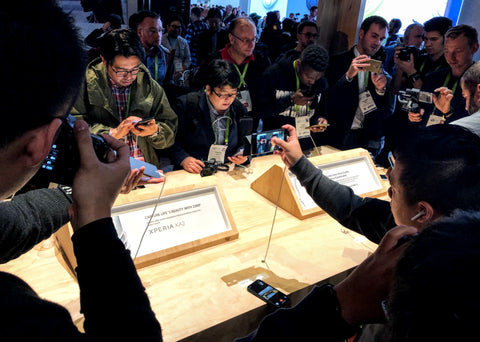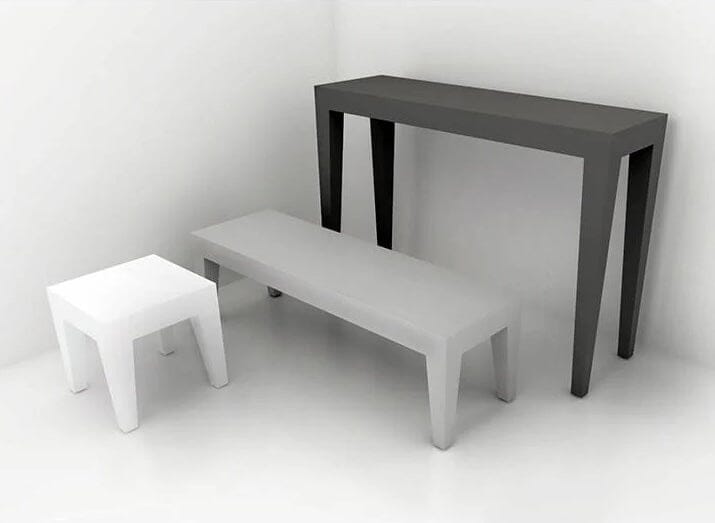
Planning your trade show booth design
It can be tempting to get googly eyed over the number of attendees a trade show organizer boasts, but if none of them are coming to your booth, you might as well have set up shop at the county fair in Muleshoe, Texas.
Whether you’re out for leads, sales, or simply brand awareness, a nice sign or even a booth babe (this is a real thing) are no longer enough to attract your ideal customer. Your tradeshow booth marketing needs to start long before the show opens, as part of your larger marketing machine in order to get the most bang for your tradeshow buck.
We’ve consulted industry experts and come up with the top 7 ways to ensure the highest ROI possible at your events this fall.
Set your goals before the show.
Susan Friedman, a trade show marketing expert and industry consultant who goes by “The Tradeshow Coach,” said that before you spend a dime on marketing, you need to ask yourself why you’re going to the show and what you want to get out of it. Do you want leads? Are you trying to close sales? Building brand awareness? These will inform many of the decisions you need to make around marketing material, giveaways, booth design, etc.
Choose your booth staff wisely.
Quality booth staff is key. People are, first and foremost, interested and attracted to other people, and if your staff looks like they’d rather be somewhere else, so will your customers. Friedman said to staff your booth with people who are knowledgeable about your product or service, engaging, and interested. Remember, the most interesting people are always interested.

Find your audience online.
Most tradeshows have a featured #hashtag you can utilize to let attendees know who you are, where you’re at, and what great things they can find at your booth. Colleen Canty, trade show coordinator for Bulb, saw a huge increase in booth traffic when they decided to stay active on Twitter, Facebook and Instagram while exhibiting. This is also a great way to engage your current followers and fans who may be attending the show.
It pays to be specific.
The experts agree, when you try to attract everyone, you attract no one. By now, you know your customer, their habits, likes and dislikes. Build your booth and marketing strategy around your ideal customer. The Tradeshow Network Marketing Group recommends building your exhibit and all your collateral materials around the niche you’ve identified to be the most important at each particular trade show (this may be different depending on what show you’re attending). Whether you want your booth to be loud and exciting with lighted displays and brilliant colors or peaceful and calming with comfy seating and an organic ambiance completely depends on what your ideal customer wants. Build it for them.
Don’t be afraid of technology.
In an analysis of the latest tradeshow trends, Competitive Edge—an exhibitor education, training and consulting firm—found that the biggest players are using interactive technologies like tablets, touchscreens and digital signing to provide more personalized in-booth experiences. For example, last year we built a display for Bulb that featured framed screens where the exhibitors could showcase their digital product live.

We’ve said it before and we’ll say it again: Lighting is everything.
Typically, tradeshow hall lighting is a lot like movie-theater bathroom lighting: everyone and everything looks bad. Luckily, there are ways to fix that. Sean Roberts, a global strategist in the event and tradeshow industry (and good friend of ours) says that in order to create an inviting booth, consider what you’d like to illuminate, and find the right kind of lighting to do the job. Lighted display cases can add accent or drama to your product, and lamps or floor lighting can create an inviting effect.

Walk the floor before you set up shop.
Most trade show and event organizers give you some say in your booth location. There are competing wisdoms out there, as some would recommend vying for a spot by a big vendor likely to draw a crowd, while others swear by a booth near the food court or facilities. Roberts suggests attending the show the year before to scope out the event set up, and take notes on where people are migrating to, what doors they’re entering, and what locations are drawing the most attention. According to Roberts, in large spaces like trade show halls or malls, people typically start by moving right, or towards something big and bold up front.

Conclusion.
The experts all agree: Except in the rarest of cases, booth traffic doesn’t happen by accident. Properly planning your trade show booth is critical. As you prepare for your fall trade shows and events, consider which of these booth traffic-boosters will bring up your ROI and help you meet your marketing and sales goals for the year and beyond.



